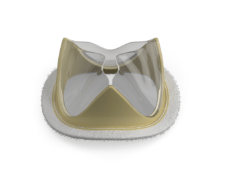According to a study presented at the European Atherosclerosis Society annual meeting (2-5 June, Lyon, France), in a mouse model of atherosclerosis, treatment with a first-in-class small molecule lipoprotein lipase inhibitor—LP071—reduced plasma levels of triglycerides by almost 100% and more than doubled plasma levels of high-density lipoprotein cholesterol.
According to Stefan Nilsson, Umeå University, Umeå, Sweden, who presented the data, lipoprotein lipase has a central role in blood lipids—it hydrolyses triglyceride-rich lipoproteins and facilitates clearance of remnant particles and the formation of nascent high-density lipoprotein particles. Therefore, by targeting lipoprotein lipase, it is possible to act on multiple factors that are implicated in residual cardiovascular risk.
In this study, dosing of wild-type mice with LP071 for one week resulted in 50% reduction in plasma triglyceride levels. In addition, three hours after oral administration of lipids (radiolabeled chylomicrons), very-low-density lipoprotein triglycerides were reduced by 85% and very-low-density lipoprotein -cholesterol by 50% versus controls.
In an animal model of atherosclerosis (ApoE3-Leiden.CETP mice), LP071 reduced triglyceride levels by 98% and raised high-density lipoprotein cholesterol plasma levels by 116%. Similar effects were reported in another mouse model.
In conclusion, this experimental study suggests that this first-in-class LPL activator LP071 might be a possible candidate for agents that are able to target atherogenic dyslipidaemia.













